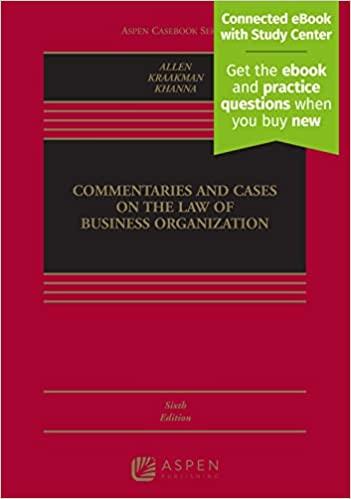Question
Read the case Jones v. GMRI inc. and BREIFLY explain what happened in the case FACT: CONCLUSION: On 11 November 1994, Loretta Jones was injured
Read the case Jones v. GMRI inc. and BREIFLY explain what happened in the case
FACT:
CONCLUSION:
On 11 November 1994, Loretta Jones was injured when she bit into a meatball at an Olive Garden Restaurant owned by GMRI, Inc. ("defendant") in Pineville, North Carolina. Plaintiffs filed a complaint on 10 November 1997 against defendant and Rich Products Corporation, which allegedly supplied or manufactured the meatball, asserting claims of negligence.
plaintiffs presented the testimony of a friend who was present at the restaurant on the day of the incident, themselves, and three physicians. Plaintiffs' evidence tended to show that when plaintiff Loretta Jones attempted to take her first bite of the meatball, she bit down into an unidentified metal object. At that time, she experienced an "incredible stabbing pain in [her] tooth and [her] jaw," caused by a broken tooth. Because she was startled, she "sucked in and immediately sucked down the food" and the object. On cross-examination, plaintiff testified that she cut the meatball into eight pieces prior to taking the bite, and that she did not detect any foreign object in the meatball at that time.
Defendant presented evidence tending to show that most of the restaurant's meatballs come into the store frozen and in sealed bags. The restaurant does a visual inspection of the sealed bags of meatballs, and sends back those that do not meet the inspection. The meatballs are put into the freezer at the restaurant until needed, then put into a plastic holding container and placed in a refrigerator. The meatballs, which are slightly larger than a golf ball, are then mixed with a tomato sauce, heated, and served whole. Restaurant personnel testified that they do not poke or slice the meatballs, other than to check the temperature with a probe.
Defendant presented the following evidence on this issue: (1) the restaurant removes whole, already formed, meatballs from the sealed bags, defrosts, and reheats them, (2) the restaurant does not slice or cut into the meatballs because that would alter the nature of the dish, but (3) the restaurant does probe some of the meatballs with a thermometer to check the temperature. The evidence also showed that plaintiff cut the meatball into eight pieces prior to eating it and did not discover the object.
the jury awarded plaintiffs no recovery
In the case before us, plaintiffs' evidence at trial established that the feme plaintiff was injured after biting into a piece of a meatball. She offered no evidence showing defendant's breach of a duty or standard of care. This Court has previously held that the doctrine of res ipsa loquitur does not apply in a case involving an injury from the ingestion of an adulterated food product.
Step by Step Solution
There are 3 Steps involved in it
Step: 1

Get Instant Access to Expert-Tailored Solutions
See step-by-step solutions with expert insights and AI powered tools for academic success
Step: 2

Step: 3

Ace Your Homework with AI
Get the answers you need in no time with our AI-driven, step-by-step assistance
Get Started


